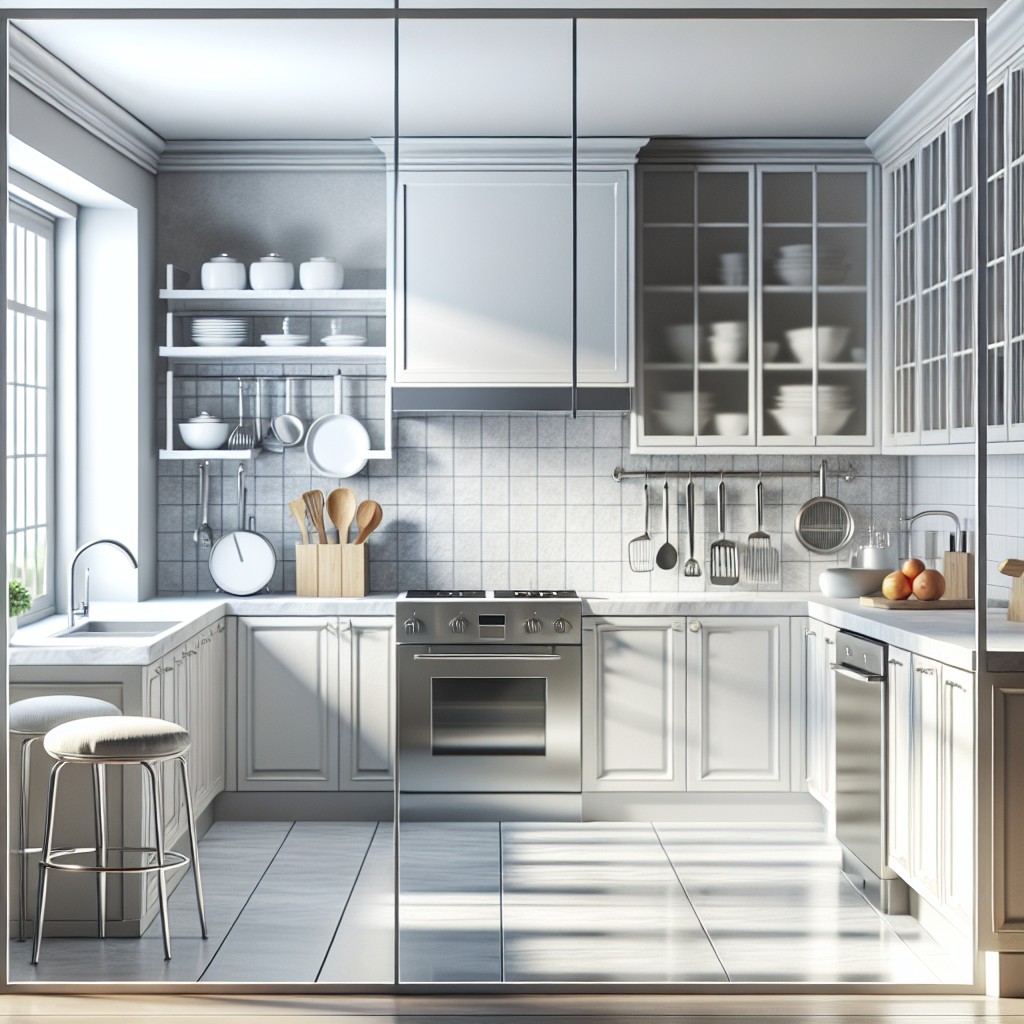Last updated on
Master the correct spelling and understanding of the word ‘kitchen’ in this informative read.
Key takeaways:
- Kitchen: A space for meal preparation and family gatherings.
- Spelling: Breakdown of each letter in ‘kitchen’.
- Common Mistakes: Avoiding extra letters and swapped vowels.
- Similar Words: How to differentiate ‘kitchen’ from ‘chicken’.
- Fun Facts: The origin and history of the word ‘kitchen’.
What's Inside
Definition of Kitchen

At its core, a kitchen serves as the heart of the home: a space dedicated to meal preparation, cooking, and often a place for family gatherings. This convergence of functionality and social interaction has deep roots in both history and culture.
The term encompasses more than just its physical boundaries; it’s about the aromas of simmering pots, the warmth of a freshly baked loaf, the sizzle of a frying pan. It’s the combination of appliances, utensils, cabinets, and countertops that create an environment where culinary magic happens.
Regardless of size or style, whether it’s a chef’s professional arena or a small corner in an apartment, it represents a universal concept where nourishment and creativity thrive. The word reflects not just a room, but an experience of crafting meals and making memories.
Spelling Breakdown: Dissecting ‘Kitchen’ Letter By Letter
Dissecting any word starts with separating it into smaller, manageable chunks, such as syllables and individual letters. For the term at hand, let’s dive in:
- Begin with the ‘K,’ a strong consonant that signals the start of many English words. It’s pronounced with a hard ‘k’ sound, as in ‘king.’
- Next, the ‘I,’ which in this case sounds like the ‘i’ in ‘bit’ rather than the long ‘i’ in ‘bike.’
- Following ‘I’ is ‘T,’ a common consonant that’s voiced in a sharp, clipped manner, reminiscent of words like ‘table’ or ‘top.’
- ‘C‘ arrives fourth in line, wrapping a soft ‘s’ sound, common when ‘c’ precedes an ‘e,’ ‘i,’ or ‘y,’ much like in ‘cent’ or ‘circle.’
- Afterwards, ‘H‘ is quite the silent partner here, but when paired with ‘c,’ it changes the sound to ‘ch,’ as in ‘chocolate.’
- ‘E‘ often signals the nearly silent vowel in many English terminations, serving to soften the consonant before it rather than being pronounced as a distinct syllable.
- Lastly, ‘N‘ ends the word with a resonant ‘n’ sound, similar to final letters in ‘oven’ or ‘sudden.’
Remember, sounding out the letters can help internalize the spelling, turning it into second nature. Keep practicing by writing it out or using it in a sentence. With a bit of repetition, typing or penning the word ‘kitchen’ confidently becomes a piece of cake.
Common Mistakes: Recognizing and Avoiding Them
When typing at breakneck speeds or simply not paying close attention, it’s easy to tap in an extra ‘t’, turning ‘kitchen’ into ‘kittchen’, a mistake as common as finding a misplaced fork in the spoon section.
Watch out for the sneaky switch-up of ‘e’ and ‘i’, which can result in ‘kicthen’, a jumble that no spellcheck should miss, but our brains often do.
Another slip could have you typing ‘chitchen’, possibly influenced by the word ‘chicken’.
To fend off these typos, mentally pronounce ‘kitchen’ slowly as you write it, ensuring each letter falls into its correct spot.
Remember, it’s a cooking ‘kit’ followed by a cozy ‘chen’.
Keep an eye out for these pitfalls, and your spelling will be as flawless as your grandma’s secret recipe.
Similar Words: Differentiating ‘Kitchen’ From ‘Chicken’
Navigating the letter maze between ‘kitchen’ and ‘chicken’ can trip anyone up, thanks to their teasing similarity. Here’s how to keep them straight:
– **First Sound Focus**: ‘Kitchen’ kicks off with a ‘k’ sound, a sharp and clear beginning, unlike the ‘ch’ in ‘chicken’ which is more of a soft shuffle. – **Vowel Variation**: Note the vowel that follows. ‘Kitchen’ houses an ‘i’, while ‘chicken’ nests an ‘i’ after the ‘ch’. This swap might seem small, but it’s crucial. – **Middle Sound Mix-up**: Don’t let the ‘t’ in ‘kitchen’ fool you. It’s an unassuming guest sandwiched right in the middle, absent in ‘chicken’. – **Ending Echo**: Both words end with ‘en’, a friendly reminder that at least some things remain constant.Remembering these pointers turns potential confusion into confident clarity when spelling these kitchen-related words.
Fun Facts: The Origin and History of the Word ‘Kitchen’
The word ‘kitchen’ has a storied past, winding its way through several languages before arriving at the familiar term we use today. Its roots can be traced back to the Latin ‘coquina,’ a derivative of ‘coquere,’ meaning ‘to cook.’
This Latin term transitioned into the Old English ‘cȳcene’ during the early medieval period.
The evolution of ‘kitchen’ also passed through the Germanic languages, where it was referred to as ‘Küche’ in German. This influence is a nod to the cultural exchanges and conquests that played a significant part in shaping language.
The Middle English period saw it morph into ‘kichene’ or ‘kuchene,’ which closely mirrors the way we spell it today. It’s fascinating to see that despite many changes over centuries, the essence of the word, including its sound and meaning, has remained relatively stable.
Now, when we saunter into our modern kitchens, we’re not only stepping into a space of culinary creation but also a rich linguistic heritage that has withstood the test of time.




